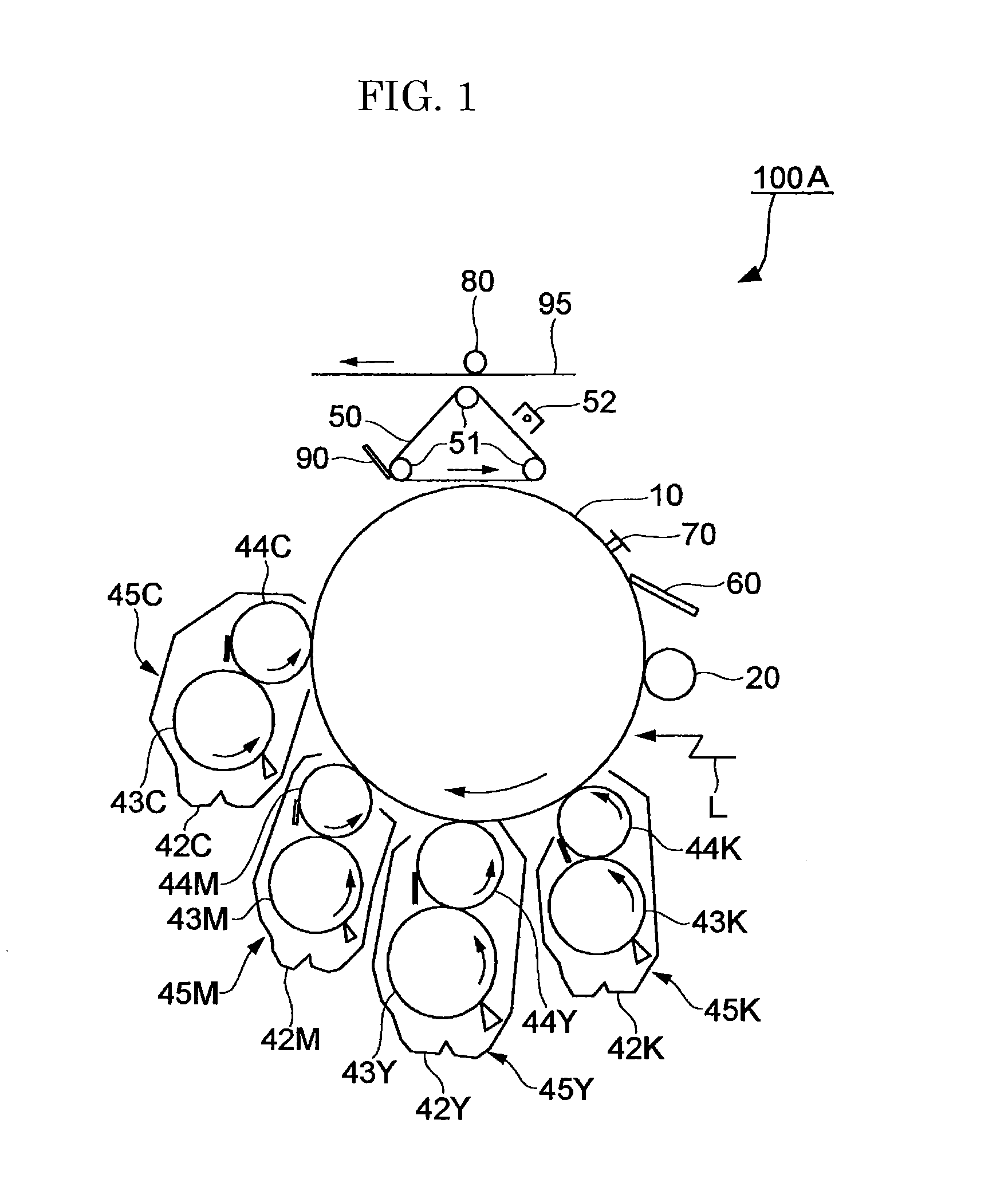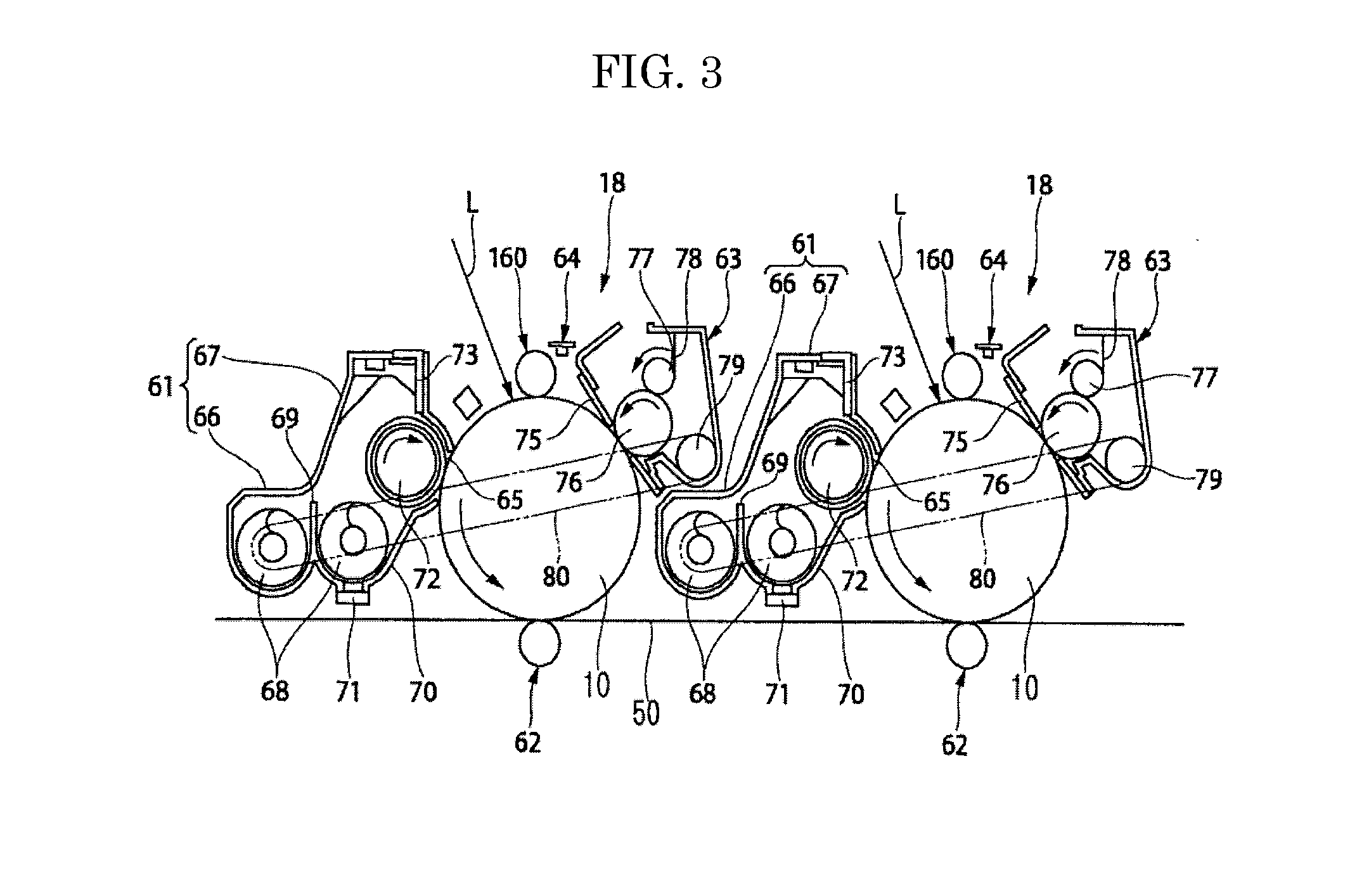Toner for forming electrostatic image, developer, process cartridge, and image forming apparatus
a technology for electrostatic images and toner cartridges, applied in electrographic process equipment, electrographic process equipment, instruments, etc., can solve the problems of affecting the operation of the developing device, the aggregation (blocking) of powder, and the inability to operate the developing device, etc., to prevent the transfer of whites, prevent the effect of transfer white missing, and low temperature fixing ability
- Summary
- Abstract
- Description
- Claims
- Application Information
AI Technical Summary
Benefits of technology
Problems solved by technology
Method used
Image
Examples
synthesis example 1
Synthesis of Reactive Group-Containing Non-Linear Polyester Resin A-1-1
[0205]A reaction vessel equipped with a cooling tube, a stirrer, and a nitrogen-inlet tube was charged with a mixture containing 3-methyl-1,5-pentanediol and trimethylol propane at a molar ratio of 97:3 (alcohol components), and adipic acid (an acid component) in amounts that satisfied OH:COOH=1.1:1, together with titanium tetraisopropoxide (300 ppm relative to the resin component). Thereafter, the mixture was heated to 200° C. over about 4 hours, followed by heating to 230° C. over 2 hours, and the mixture was allowed to react until effluent run out. Thereafter, the resultant was further allowed to react for 5 hours under the reduced pressure of 10 mmHg to 15 mmHg, to thereby obtain intermediate polyester. Next, a reaction vessel equipped with a cooling tube, a stirrer, and a nitrogen-inlet tube was charged with the intermediate polyester and isophorone diisocyanate at a molar ratio of 2.1:1, and the mixture was...
synthesis example 2
Synthesis of Reactive Group-Containing Non-Linear Polyester Resin A-1-2
[0206]A reaction vessel equipped with a cooling tube, a stirrer, and a nitrogen-inlet tube was charged with a mixture containing 3-methyl-1,5-pentanediol, a bisphenol A ethylene oxide (2 mol) adduct, and trimethylol propane at a molar ratio of 20:77:3 (alcohol components), and a mixture containing adipic acid and terephthalic acid at a molar ratio of 50:50 (acid components) in amounts that satisfied OH:COOH=1.1:1, together with titanium tetraisopropoxide (300 ppm relative to the resin component). Thereafter, the mixture was heated to 200° C. over about 4 hours, followed by heating to 230° C. over 2 hours, and the mixture was allowed to react until effluent run out. Thereafter, the resultant was further allowed to react for 5 hours under the reduced pressure of 10 mmHg to 15 mmHg, to thereby obtain intermediate polyester. Next, a reaction vessel equipped with a cooling tube, a stirrer, and a nitrogen-inlet tube wa...
synthesis example 3
Synthesis of Reactive Group-Containing Non-Linear Polyester Resin A-1-3
[0207]A reaction vessel equipped with a cooling tube, a stirrer, and a nitrogen-inlet tube was charged with a mixture containing 3-methyl-1,5-pentanediol and trimethylol propane at a molar ratio of 97:3 (alcohol components), and a mixture containing adipic acid and terephthalic acid at a molar ratio of 50:50 (acid components) in amounts that satisfied OH:COOH=1.1:1, together with titanium tetraisopropoxide (300 ppm relative to the resin component). Thereafter, the mixture was heated to 200° C. over about 4 hours, followed by heating to 230° C. over 2 hours, and the mixture was allowed to react until effluent run out. Thereafter, the resultant was further allowed to react for 5 hours under the reduced pressure of 10 mmHg to 15 mmHg, to thereby obtain intermediate polyester. Next, a reaction vessel equipped with a cooling tube, a stirrer, and a nitrogen-inlet tube was charged with the intermediate polyester and iso...
PUM
| Property | Measurement | Unit |
|---|---|---|
| glass transition temperature | aaaaa | aaaaa |
| melting point | aaaaa | aaaaa |
| glass transition temperature | aaaaa | aaaaa |
Abstract
Description
Claims
Application Information
 Login to View More
Login to View More - R&D
- Intellectual Property
- Life Sciences
- Materials
- Tech Scout
- Unparalleled Data Quality
- Higher Quality Content
- 60% Fewer Hallucinations
Browse by: Latest US Patents, China's latest patents, Technical Efficacy Thesaurus, Application Domain, Technology Topic, Popular Technical Reports.
© 2025 PatSnap. All rights reserved.Legal|Privacy policy|Modern Slavery Act Transparency Statement|Sitemap|About US| Contact US: help@patsnap.com



